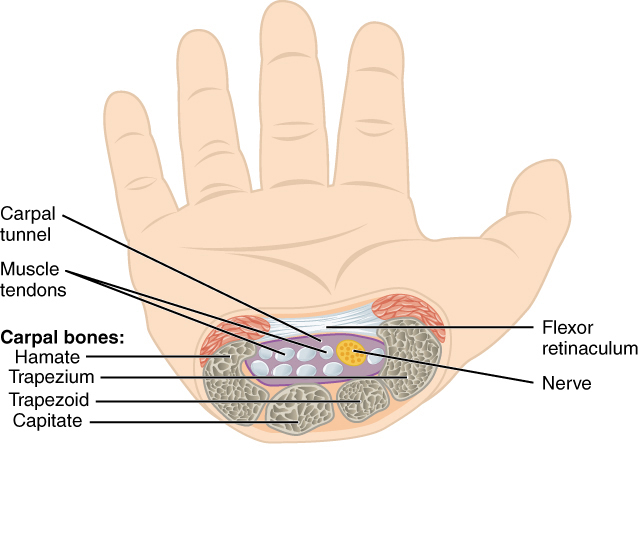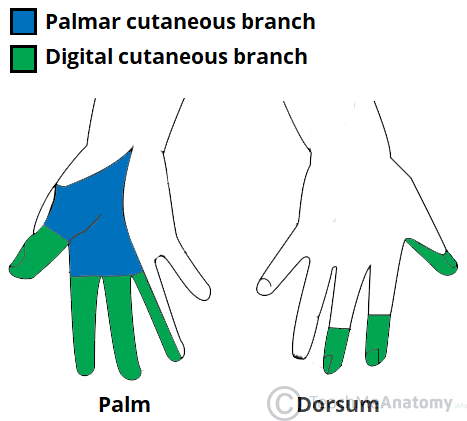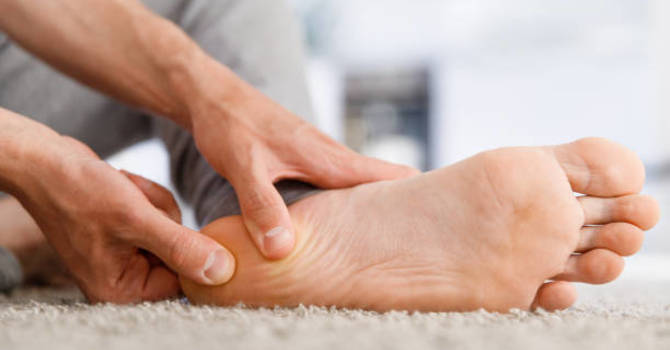So You're Dealing with Carpal Tunnel Syndrome?
Do you need surgery if you are dealing with carpel tunnel syndrome? Well, it depends…. most likely not…. but let us see where you fall based on your current situation. You might be surprised at some of the things you might learn as you dive deeper into this article.
Carpal Tunnel – Anatomy
The carpal tunnel is exactly that, a tunnel. This tunnel is located at the wrist joint, and its borders are made up of wrist bones, wrist ligaments, and connective tissue. What runs through this tunnel are a series of nine muscle tendons, but most importantly, the median nerve! This is the nerve that will be impacted with Carpal Tunnel Syndrome by either compression or traction of the median nerve.

Median Nerve in Carpal Tunnel Syndrome
The median nerve provides motor control and sensory function to the forearm and the hand. The sensory distribution for the median nerve in the hand controls the palmar side of the first 3 fingers, and the outer portion of the 4th finger

The median nerve is susceptible to compression and traction, giving rise to Carpal Tunnel Syndrome. This compression affects its motor functions, impacting muscles responsible for wrist and finger movements, as well as its sensory functions, leading to pain, numbness, and weakness in the palm and fingers
Who’s At-Risk for Carpal Tunnel Syndrome
- The incidence of CTS in the general population ranges from 1% to 4%
- CTS is more prevalent in females than males, with a 3:1 female-to-male ratio
- The risk of developing CTS is doubled in individuals who are obese
- CTS is uncommon in children and typically manifests in adults aged 40 to 60
What Causes Carpal Tunnel Syndrome
Carpal Tunnel Syndrome is primarily caused by compression of the median nerve as it passes through the carpal tunnel in the wrist. Several factors contribute to the development of Carpal Tunnel Syndrome:
- Repetitive hand movements – continuous use of the hands, especially with repetitive flexion and extension can lead to the development of Carpal Tunnel Syndrome. This is quite common in occupations that require repetitive, continuous forceful use of the hands
- Forceful gripping or vibrations – jobs that require forceful gripping, especially with the use of tools that have continuous vibration, can lead to the development of Carpal Tunnel Syndrome. That force and vibration can lead to stress in the carpal tunnel irritating the median nerve
- Medical conditions – certain medical conditions can make it more likely for an individual to develop Carpal Tunnel Syndrome. A few of these conditions are diabetes, obesity, rheumatoid arthritis, and thyroid disorders.
- Gender – women are more susceptible to developing Carpal Tunnel Syndrome, especially during pregnancy and menopause, due to hormonal changes and/or fluid retention.
- Trauma or injuries – acute injuries to the wrist may result in a fracture or muscle strain, which could cause strain or irritation to the carpal tunnel causing the median nerve to be irritated
- Inflammatory conditions – inflammatory conditions may irritate the tissues in the carpal tunnel causing the median nerve to become compressed like with tenosynovitis or synovitis
- Age – Carpal Tunnel Syndrome mostly affects individuals between the ages of 40-60 years old. Women are impacted more than men.
Symptoms of Carpal Tunnel Syndrome
The clinical presentation of a patient suffering from Carpal Tunnel Syndrome involves a range of symptoms that result from compression of the median nerve within the carpal tunnel. Common clinical features include:
- Pain and numbness – patients often experience pain, tingling, and numbness in the thumb, index finger, middle finger, and the outer portion of the ring finger. At times, those symptoms may extend up into the forearm
- Nighttime symptoms – Commonly, Carpal Tunnel Syndrome symptoms are more pronounced during sleep. Oftentimes, the patients will have to wake up and “shake out” their hand/s to alleviate those symptoms
- Hand weakness – oftentimes patients with Carpal Tunnel Syndrome experience weakness with their grip. They even struggle with fine motor control like holding smaller objects
- Sensory changes – patients often complain of a feeling of “pins and needles” in their hand and first 3 fingers. At times they might even report a feeling of an electric shock in those areas
- Radiating pain – occasionally patients can report having pain radiate upwards to the elbow or downwards towards the fingers
- Symptoms aggravated with activities – oftentimes these symptoms are made worse with repetitive movements, especially movements with continuous forceful wrist flexion or extension
Management of Carpal Tunnel Syndrome
This is where it gets challenging to determine which is the best route for an individual to pursue when it comes to finding relief with Carpal Tunnel Syndorme. There are multiple options to choose from, and some are more effective than others. Let’s do our best to lay out the options and help provide somewhat of a guide to appropriately managing Carpal Tunnel Syndrome.
I started this article out with the question, “Do I need surgery for Carpal Tunnel Syndrome?” Here is where I will admit that based on the evidence surgery is quite effective at relieving symptoms and freeing up that pressure on the median nerve. But should an individual opt for surgery as their first choice to resolve their symptoms – most of the time, no. Let me explain with an analogy comparing Carpal Tunnel Syndrome to a backyard firepit that needs extinguished:
In the context of Carpal Tunnel Syndrome management, imagine Carpal Tunnel Syndrome as a backyard fire pit that requires extinguishing. Would it make sense for you to call the fire department to bring a fire truck to your house to put out the fire? Absolutely not! Yes, that would certainly put out the fire, no doubt about it, but was that necessary? No. You very likely have a much more effective solution to put out the fire, and that would be either a bucket of water or a hose that would more than suffice to douse the flames.
In the above scenario, the fire truck is considered surgery. That fire truck would more than be capable of putting out that small fire, and that’s the same for surgery in resolving Carpal Tunnel Syndrome. The evidence is strong to support surgery as an effective solution to alleviate symptoms of Carpal Tunnel Syndrome. The question you must ask yourself though is whether it is necessary to bring the fire truck (surgery) out as a first line of defense. The answer to that question most of the time is no – you will likely get better before you get that far down the road.
Logic says to grab that bucket of water or a hose to extinguish that firepit. The same goes for Carpal Tunnel Syndrome management. You might want to start with more conservative measures first to treat and manage your condition, and if those options are not successful then you start climbing the ladder of management – maybe if that fire gets out of control, then you call the fire truck out!
Conservative Management Options for Carpal Tunnel Syndrome
If a patient desires to put surgery on the back burner and opt for a more conservative approach (like grabbing that bucket of water) they have options:
Phase 1
- Immobilization - Strong evidence supports that the use of immobilization (brace/splint/orthosis) should improve patient-reported outcomes. Often a night splint is very effective at controlling symptoms while you sleep
- Therapy – the use of an active therapy program is often effective at controlling symptoms and finding relief with Carpal Tunnel Syndrome. This program needs to focus on stretching and strengthening of specific regions of the arm and hand to achieve optimal progress
- Activity modifications – controlling or modifying the activity/s that might have led to the symptoms in the first place, might help alleviate your symptoms.
If a patient does not find relief with this first line of defense of conservative care, then they might consider:
Phase 2
- Oral treatments – NSAIDs or oral steroids. Moderate evidence supports these two options to help with symptom control.
- Steroid Injections - Strong evidence supports that the use of steroid (methylprednisolone) injection should improve patient-reported outcomes.
A large percentage of patients, if they follow the above outline for conservative care of Carpal Tunnel Syndrome, will find relief and resolution of their symptoms. If a patient has gone through the above protocol, and they are still dealing with their symptoms, then it might be time to consider calling that fire truck to help put out the flames!
Schedule Your Free Discovery Visit!
Free Discovery Visit: Explore Your Path to Recove




